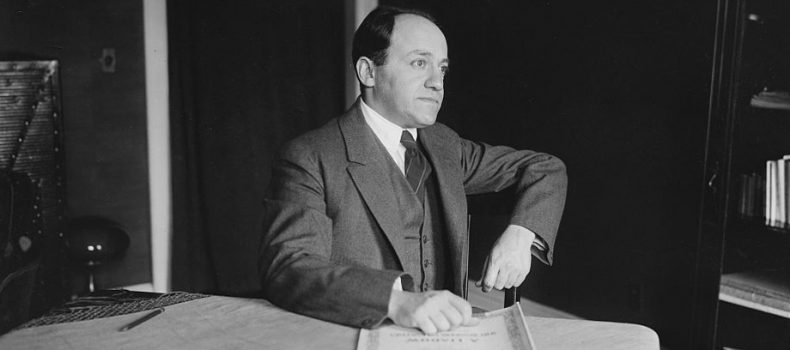Singing Ernest Bloch’s sacred songs was a thrill
In the early 1930 s, visionary Cantor Reuven Rinder of San Francisco ‘s Temple Emanuel raised $ 10,000 to commission the world acclaimed composer, Ernest Bloch to write a setting with the Reform Jewish Sabbath Morning Prayer book of the `1930s. Bloch was already an acclaimed composer of many major works plus those with Jewish themes: The Israel Symphony (1916), Trois poèmes Juifs, (Three Jewish Poems), the tone poem Schelomo for cello and orchestra (1916; Solomon), and the suite Baal Shem for violin and piano (1923)/
I first heard Bloch’s Avodath Ha-kodesh performed at UC Berkeley and was thrilled to see the stage filled with mass chorus, orchestra and cantor performing Jewish liturgical music. The scene and sound reminded me of the ancient tribe of Levites conducting services in the ancient temple in Jerusalem as described in the Book of Chronicles 5:12
12 All the Levites singers with their sons and their brethren, being arrayed in white linen, having cymbals and psalteries and harps, stood at the east end of the altar, and with them an hundred and twenty priests sounding with trumpets.”
The program notes stated the work was composed for baritone cantor, and being a Tenor I was disappointed, and figured it was not for me. Years later however one of my tenor colleagues mentioned he had sung it. Wow! I was inspired. Why not a tenor? I went back to the score and saw I could easily raise the lower notes up an octave without affecting the integrity of the composition. It was now my dream to actually sing it.
Fortuitously, in San Diego in 1981 my phone rang and I was invited to be guest soloist with San Diego State University chorus in their performance of Bloch’s magnificent Sabbath Service. What a treat! !
I performed it again in 1988 with David Amos and his Jewish Community orchestra and the choir from St Paul’ s Episcopal Church. We presented it on Friday night at Beth Israel Synagogue as part of the regular service, and again on Sunday morning at the church, a wonderful inter-faith exchange.
The service was recorded and you can listen to a few excerpts by clicking here. I hope the Bar’chu (call to worship), Sh’ma (the Lord is one), and portions of the V’ah-hav-ta will give you some idea of the grandeur of Ernest Bloch’s imagination and genius.
Bloch’s music reflects Jewish cultural and liturgical themes as well as European post-Romantic traditions. He was the first director of the Cleveland Institute of Music and the second director of the San Francisco Conservatory. He taught part time at UC Berkeley until 1952 after moving to Agate Beach, Oregon, in 1941
It is no accident that Bloch wrote some of his works in a Jewish theme as his father had at one stage intended to become a rabbi, and young Ernest had a religious upbringing. In his adult years he remarked, “To write music that expressed my Jewish identity was the only way I can produce music of vitality and significance.”
Bloch devoted over a year between his native Switzerland and home in Oregon to complete the assignment. During that year he decided to expand the service into a musical setting that would reach far beyond the boundaries of Jewish liturgy. He called his composition a cosmic poem, and said, “The music had become a private affair between God and me.” He intended the message to go to the entire world, not to be exclusively Jewish but to provide a piece for all who seek to worship.
Cantor Rinder coached Bloch with Hebrew accentuation, and suggested to add at least one traditional prayer, “Tzur Yisrael. ”This is probably the only familiar liturgical chant in the entire service.
After the debut of Avodat ha-kodesh at Temple Emanuel, Garret Harris’ review described it, “ As flowing between massive hyper-emotional segments interspersed with delicate gauze-like textures in the orchestral setting.”
I feel privileged to have sung the Bloch Sacred Service with full orchestra and choir a few times. Unfortunately, it is rarely performed as the cost of engaging a full orchestra is costly. Leonard Bernstein recorded it with the New York Philharmonic years ago, but it is only available on disc. The few CDs I researched are costly; so if your local synagogues or Symphony Orchestra attempts the work, don’t hesitate to catch it live.
I dedicate my article to the memory of Ernest Bloch and his many contributions to Jewish music and the world’s cosmos.
*
Cantor Merel is cantor emeritus of Congregation Beth Israel in San Diego. He may be contacted via sheldon.merel@sdjewishworld.com
Republished form sdjewishworld

